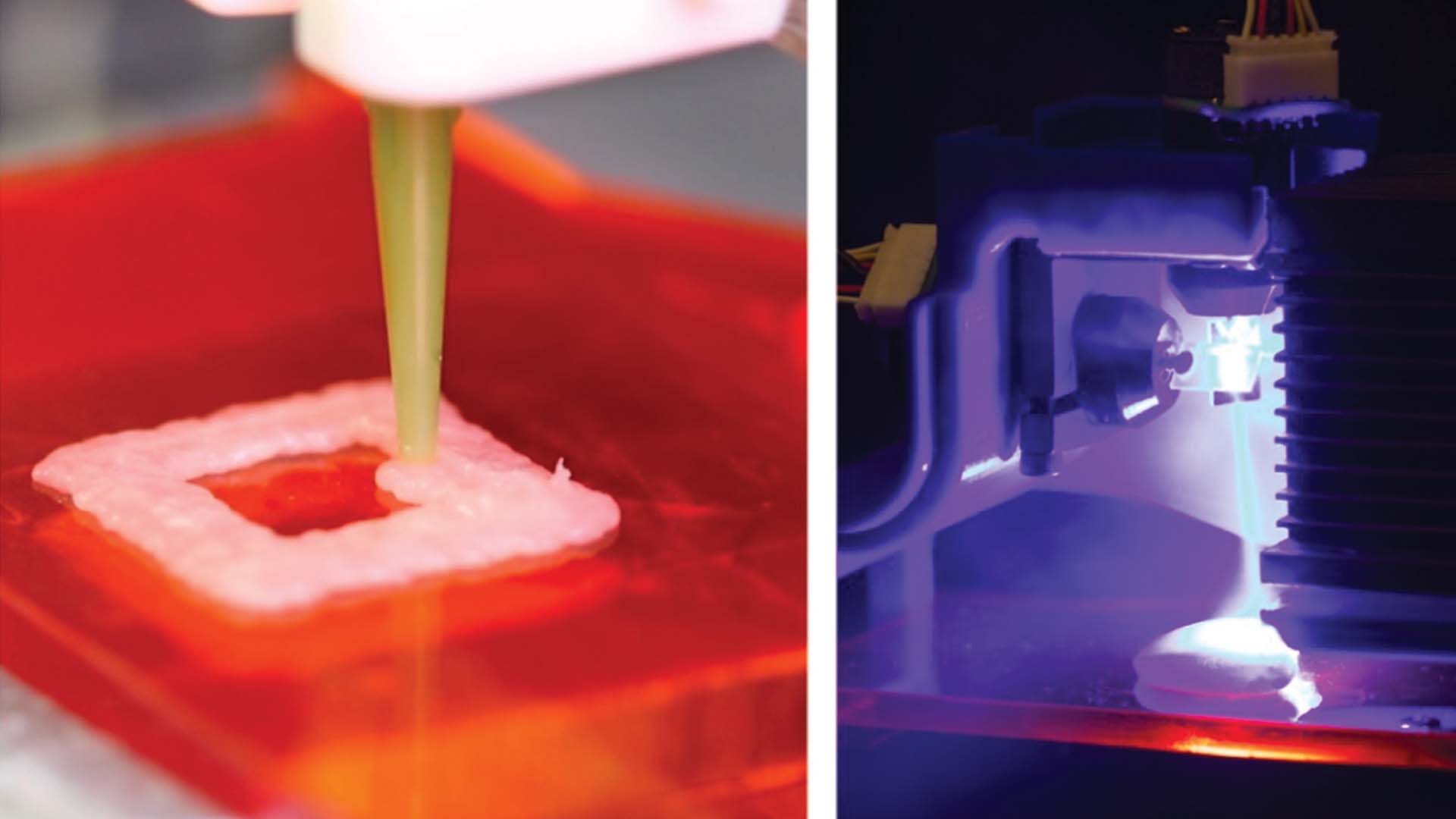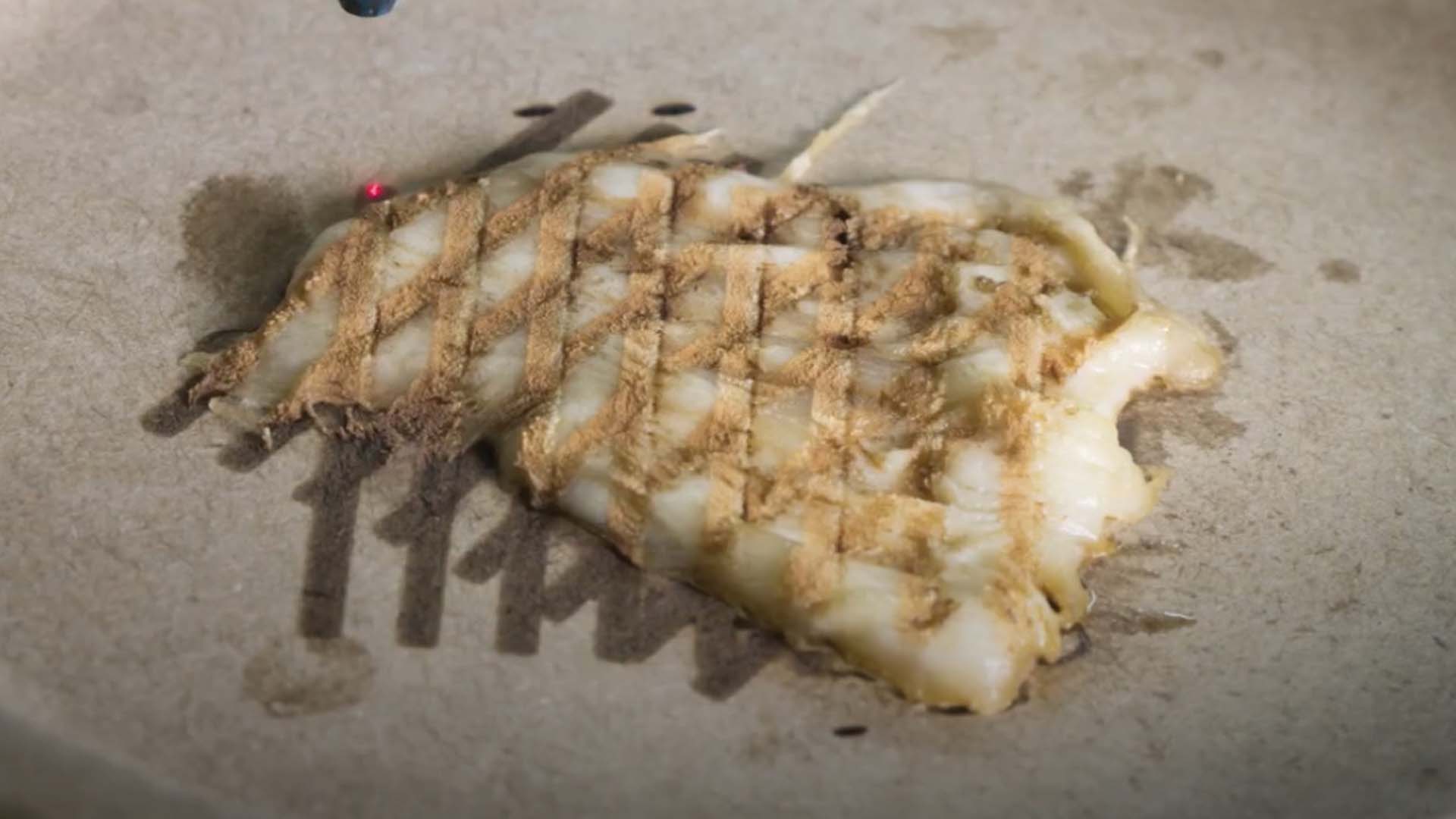Would you ever eat a 3D-printed and cooked meal? Thanks to engineers at Columbia University, this is now possible. In September 2021, they announced that they successfully 3D-printed and cooked a previously raw chicken.
3D-printed food items began in 2007 at Columbia with a personal fabrication system creating edible 3D objects. However, in 2021, this system was improved upon by adding lasers to the system, simultaneously printing and cooking the food.

Photo Credit: Columbia Engineering
The first food 3D-printed and cooked was a raw chicken breast purchased from a convenience store. First, engineers pureed it in a food processor, removed any tendons, and refrigerated the samples. They then repackaged the samples into 3D-printing syringe barrels to avoid clogging. To cook the chicken, they used a high-powered diode laser, a set of mirror galvanometers to detect electrical current by deflecting light beams, a fixture for custom 3D printing, laser shielding, and a removable tray. This setup allowed them to print and cook ingredients on the same machine.
Their experiment was successful and even tasty. Because it was cooked with a laser, the chicken retained twice as much moisture and shrank half as much. The team served samples of the 3D-printed laser-cooked chicken and a conventionally cooked chicken to two taste testers; both of them preferred the laser-cooked chicken.

Photo Credit: Columbia Engineering
In the future, the team wants to use multiple wavelengths to cook something simultaneously internally and externally. Their ultimate goal is for everyday people to be able to design and cook the foods that they want.
This innovation is a further step in the world of 3D printing. From 3D-printed rockets to houses and to nuclear energy usage, 3D printing clearly plays a massive role in our future.
Learn more about the World of Production, and discover how the Nintendo Switch, dumbbells, and microchips are made.




